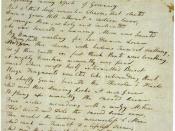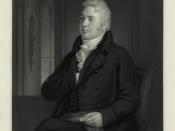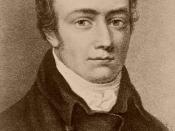'Frost at Midnight' is another of Coleridge's most famous Conversation poems. In it, through musing on some childhood memories set off by the quiet within his cottage, Coleridge partly muses on those psychological states that produce poetry. Hence, it is another perfect exemplar of an imaginative journey - and, again, it is one which eventually broadens his own understanding of the world.
The following analysis takes you carefully through the poem. As you read it, think about how it shows the journey of Coleridge's consciousness.
"The Frost performs its secret ministry" (l.1)
Here Coleridge establishes an air of a magical, quasi-religious process at work in the simple natural act of the frost falling outside. The line also implies a strong energy at work - despite this sense of energy, it is silence that is to be the most overwhelming sense in the poem.
"Unhelped by any wind." (l.2)
The feeling of extreme stillness is built up, broken only by the cry of the owlet - a cry which Coleridge uses to draw the reader into the poem, with the direct address of "hark, again!" (l.3)
From here, in the typically systolic movement, Coleridge then moves his attention from outside, and we discover as he moves his attention inward, that indeed he himself is inside a cottage (l.4) and that the description of the outside world has been a piece of imagination. Continuing the narrowing focus, Coleridge then focuses his attention on himself alone (l.5), and then again outward somewhat onto a sleeping child: "My cradled infant slumbers peacefully" (l.7). The innocence of the cradled infant stands in opposition to the almost sinister secretiveness of the opening line.
The condition that dominates the poem at this point is that of extreme quiet and stillness:
'Tis calm indeed! so calm, that...


